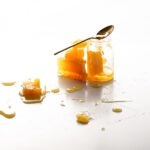Sublimation and resublimation are physical concepts that each of us came across at the stage of the first years of primary school. However, hardly anyone knows what sublimation and resublimation really mean. Even fewer people know what real phenomena and physical processes are responsible for sublimation and resublimation. Finally, hardly anyone knows how and where these phenomena are used in science, industry and technology. It is worth exploring this topic.
Sublimation and resublimation what does it mean?
Very often there is a question about what sublimation and resublimation mean? Also, few people can not confuse these terms, because they are basically a description of the same phenomenon that runs in the opposite direction. Without further ado, it’s worth explaining. Sublimation is a process in which a chemical compound or substance that remains in a solid state turns into a gaseous state. It wouldn’t be surprising if it weren’t for the fact that it skips the liquid state first. Resublimation is the opposite phenomenon, i.e. a chemical compound or substance goes from a gaseous state directly to a solid state (also bypassing the liquid phase). Most people are well aware that there are three states of matter and that any chemical compound or element it can occur in any of them (although it often requires extreme temperatures). However, not everyone remembers that the change of the state of aggregation can be a shortcut (under certain conditions, of course).
- https://www.zdii.pl/recenzje-ksiazek-blog/
- https://www.wdw.com.pl/wszystko-co-musisz-wiedziec-o-implantach-zebowych/
- https://www.human.edu.pl/jak-otworzyc-lombard-w-polsce/
What does sublimation and resublimation mean from the point of view of changing parameters?
When considering the subject of sublimation and resublimation, we must focus on two physical quantities. These include pressure and temperature. Changes of these two quantities relative to each other can cause the substance to sublimate or resublimate. What does that really mean? For example, if we have a solid that is under fairly high pressure, a sudden decrease in pressure can cause sublimation. The pressure must be lowered either for a given temperature or in a temperature range that allows sublimation for a given element. Although it is more difficult to do, we can change both pressure and temperature at the same time. For sublimation, the temperature must increase.An analogous process, only running in the other direction, applies to resublimation. Resublimation occurs when a gas at high temperature and low pressure experiences a change in a parameter or parameters (temperature or pressure). These changes relate to a decrease in temperature or an increase in pressure. As described above, they can apply to both changes at once. All parameter values must, at the same time, satisfy the conditions of the boundary parameters.
- szkola-muzyczna24.com.pl/nauka-gry-na-pianinie-fortepianie-poznan/
- okna.fao.pl
- budowa-domow24.waw.pl
What does sublimation and resublimation mean in everyday life?
In everyday life we can observe both sublimations and resublimations. Resublimation is a more noticeable and tangible phenomenon. In the case of the aforementioned resublimation, the most common examples are frost or rime. Frost and rime are water vapor that has become solid. This transition most often takes place as a result of a drastic decrease in temperature or a significant increase in pressure, and most often as a result of a change in both of these parameters. Whenever a strong and frosty high-pressure is announced in the weather forecast, we can expect these phenomena.We can notice sublimation when we dry laundry on a frosty day. Even though laundry freezes, it also dries over time. This is due to the fact that sublimation is taking place. Drying laundry in the cold works best when we have low pressure and a fairly high, but still negative temperature.Sublimation and re-sublimation is not only drying the laundry, as well as rime and frost. Sublimation and resublimation are used quite widely in industry, technology and science.
One of the best examples of sublimation applications is making sublimation prints on everyday objects and textiles. In sublimation printing, the properties of some materials used as dyes are used. These substances are quite easy to sublimate, thanks to which they can be applied in gaseous form to polymer coatings. These coatings are then dyed to the desired color by sublimation, which is sublimated. Using sublimation or resublimation, we can also purify mixtures of various solid and gaseous substances. We must remember that different substances sublime under different conditions. This is why, if we have a mixture of several substances, and we would like to isolate or get rid of only one of them, we must choose the parameters of the process so that only this one substance sublimates or resublimates. In this way, for example, technical gases or various types of substances that are used in the food industry are purified.






